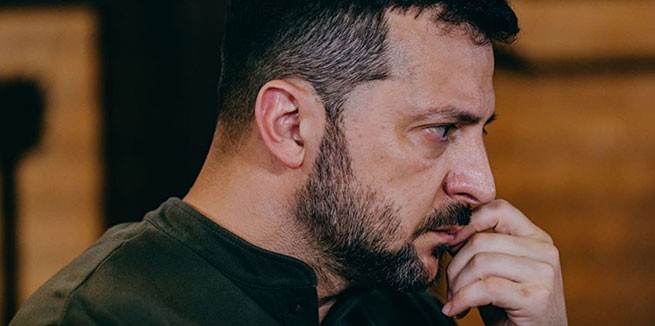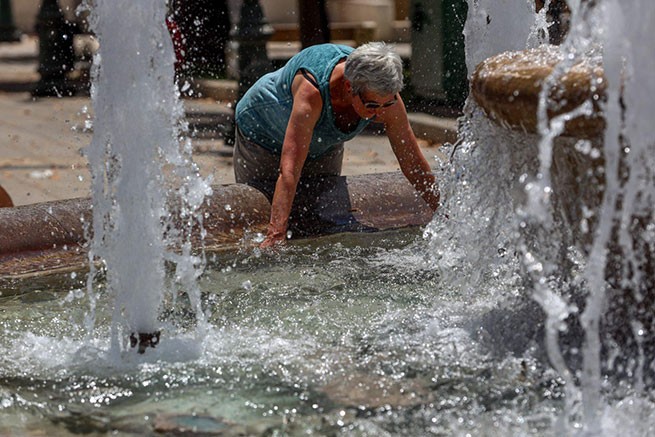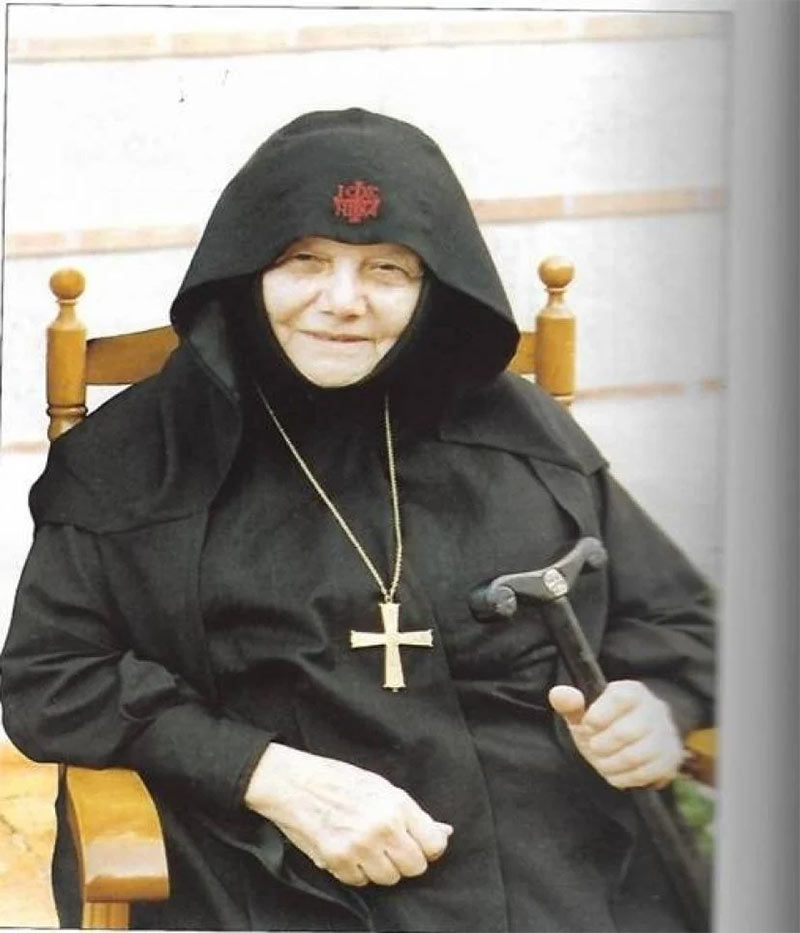On the beautiful island of Inouse, not far from the city and above the bay of Tselepi, the Holy Monastery of the Annunciation of the Virgin Mary was built. The history of the foundation of this monastery is worthy of the writer’s pen, as is the life of its founder, patroness and first abbess, until the death of the nun Maria Mirtidiotissa.
Who was this abbess? She was born into wealth and comfort, the daughter of the ship-owning family of Demetrios Lemos. Her social name is Katigo Lemos. Although she lived in wealth and enjoyment, her soul was guided from a young age by the Word of God in His holy will. In her father’s house, she had an iconostasis in a special room where she prayed for hours. Little Katigo, no matter how much her mother yelled at her to pray less, would not leave the iconostasis for hours. When she was 16 years old, she saw in a dream that while worshiping during the epitaph in the church of St. Nicholas in the city of Inousses, she saw Christ. She asked Him to give her the grace to do what she asked Him to do, and He nodded affectionately in agreement. After that, her faith became a flame for God.
Nun Maria Mirtidiotissa, (1912-2005) founder and first abbess of the monastery
After leaving school, in obedience to her parents’ will, she married Panagos Pateras (from Diamantida), also a shipowner, later a monk Xenophon. They had three children, Calliope, Diamantis and Irene, and lived a formal Christian life even outside the home, wherever they were in the world in the context of their professional obligations.
Their life in the villa in Psychiko was fragrant with love and service to people, and was far from how we imagine the life of such rich and prominent people. Church and Sunday holidays were strictly observed. Cooking and other household chores ended on the Sabbath for everyone, both masters and servants. Wednesday and Friday were fast days. They often held services and vigils, and not only noble people gathered in their salons, but also simple, modest brothers and sisters, respected elders and old women, who at that time were students and scientists.
They also showed their love by providing food and clothing to large families. After divine services and vigils, a rich banquet was arranged, at which all those present could sit, without distinction of social status. Characteristically, those present often found an envelope with a significant amount of money in a napkin, which was a significant help for their daily needs. It is said that every morning the owners put enough money in a special box in the kitchen so that the person in charge of the service could give it to everyone who came to beg. If money was left in the box in the evening, the owners scolded the responsible woman so that she would not be stingy and give more when asked. This was their attitude towards the needy.
After dinner, Lady Kachigo would go down to the kitchen and invite all the girls to the villa chapel to pray. There they all together, as one family, made the sacrament, prayers and services.
But life, unfortunately, is not always rosy. Panagos’ disease came like a lightning bolt. A rare and complex cancer, a huge challenge that left no room for optimism. The family resorted to the help of the best doctors, with even greater zeal and faith turned to the Lord. The youngest daughter Irina fervently asked God to take away her father’s illness so that he, who was the support of the family, would recover. The advice of the Lord is unchangeable. The little daughter was stricken with the same disease as her father, who recovered and lived for many more years. Doctors could not explain this phenomenon. This disease was not contagious. How did she pass from father to daughter?
During these illnesses, the villa at Psychiko was turned into a monastery. The best clergy of that time, priests, preachers, spiritual people, outstanding, but modest, gathered to support and spiritually uplift the family. Little Irene patiently endured numerous hardships that accompanied many medical procedures in the best clinics in Europe. But the disease overcame her body. Shortly before her death, she accepted the monastic curia and as a nun, now under the name of Irina Mirtidiotissa, went to heaven to rest in the arms of the Lord in 1960, at the age of 21.
While Irene was ill, the family made a vow to her to build a convent. After her death, that time seems to have come. But where will they build it? They were preoccupied with this issue and considered various places, until Elder Hieronymus of Aegina, whom they often visited, advised them, perhaps the obvious: “… It’s good that God brought you … do you have a monastery? No? Well then … your place in Inus.” And so it happened. In 1963, the foundation stone of the monastery was laid according to the architectural plans of the architect G. Koutsis from Zakynthos. The monastery was dedicated to the Annunciation of the Virgin (as was the chapel in the villa in Psychiko).
At the same time, Panagosa Diama felt that the hour of going to the Lord was not far off. He became a monk named Xenophon, lived for nearly three more years, and finally breathed his last in December 1966. Before his death, he and Katigo visited the abbot Hieronymus of Aegina to receive his blessing. He ordered that she also become a nun: before the 40-day widowhood, “she took off her widow’s clothes and put on the clothes of a nun.” He also told her, “You will go through many tribulations, but God wills it that way.”
On October 20, 1967, Katigo took monastic vows under the name of Maria Mirtidiotissa and at the same time became the abbess of the Holy Monastery in Inousa. The death of Xenophon’s father was followed quite unexpectedly by the death of their eldest daughter, Calliope, at the age of 47, and then by the death of Katigo’s third child, Diamantis, at the same age of 47.
“What do they know about the Lord? Good luck in heaven.” With these words, the mother buried her children. What a tragic fate for a mother to bury her children and be the last in her family. How many temptations. And yet “Glory to God” was the answer to the news of the death of her children, and yet “God is neither wrong nor unjust.”
The following incident is characteristic of the unshakable faith of Katigos. Once in court, her lawyer, in order to create a proper impression of his client in court, said, addressing the judges: “This woman, Your Honor, had the misfortune to lose her daughter at a young age …”. At that moment, Kachigo, ignoring the rules of the court, stood up and answered her lawyer: “No, Mr. Lawyer. I have not had any misfortunes. Everything God gives or allows is not misfortune, but His gift.” So firm was her faith, and in this matter she did not accept any deviations.







More Stories
Six Greek high school students win medals at International Mathematical Olympiad
Olympic Games: Greek Delegation Athletes Head to Paris
Big "police purge" on Athos